Resistor is a two-terminal device characterized essentially by its resistance.
Note – In French, the term “résistance” also denotes the characteristic quantity of a resistor, in English “resistance”.
The following tables summarize the most common resistor symbols for electrical and electronics design.
See also: capacitor symbols ►
General
| Symbol | Description |
|---|---|
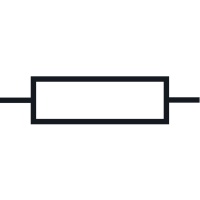 | Name: Resistor, general symbol Remark: See A1 note Source: IEC 60617-2019, IEC 60417-2020, IEEE Std 315-1993 |
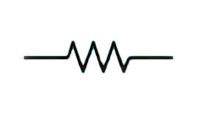 | Name: Resistor Alternative name: Heating resistor Source: IEEE Std 315-1993 |
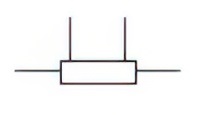 | Name: Resistor with fixed tappings Alternative name: Resistor with separate current and voltage terminals Remark: The symbol is shown with two tappings Source: IEC 60617-2019 |
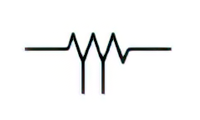 | Name: Tapped resistor Source: IEEE Std 315-1993 |
 | Name: Resistor with separate current and voltage terminals Alternative name: Shunt Remark: See A2 note Source: IEC 60617-2019, ANSI/IEEE Std 315A-1986 |
 | Name: Shunt resistor Source: IEEE Std 315-1993 |
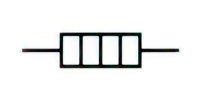 | Name: Heating element Alternative name: Electric heating element type Source: IEC 60617-2019, ISO 14617-11 |
 | Name: Series resistor and path open Source: IEEE Std 315-1993 |
 | Name: Series resistor and path short-circuited Source: IEEE Std 315-1993 |
Symbols Variable & Adjustable Resistors
| Symbol | Description |
|---|---|
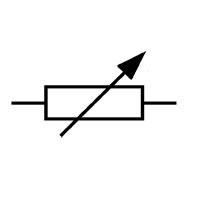 | Name: Resistor, adjustable Source: IEC 60617-2019, IEEE Std 315-1993 |
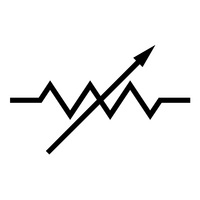 | Name: adjustable or continuously adjustable (variable) resistor; rheostat Source: IEEE Std 315-1993 |
 | Name: Resistor with continuous adjustability Source: ISO 14617-2 |
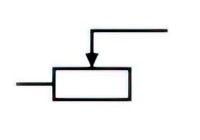 | Name: Resistor with movable contact Source: IEC 60617-2019 |
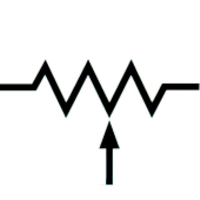 | Name: Resistor with adjustable contact Source: IEEE Std 315-1993 |
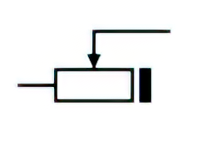 | Name: Resistor with movable contact and off position Source: IEC 60617-2019 |
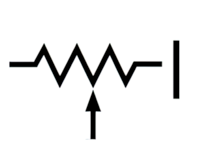 | Name: Resistor with adjustable contact and OFF (disconnect) position Source: IEEE Std 315-1993 |
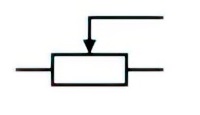 | Name: Potentiometer with movable contact Source: IEC 60617-2019 |
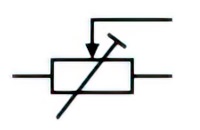 | Name: Potentiometer with movable contact and pre-set adjustment Alternative name: preset adjustable resistor Source: IEC 60617-2019, ANSI/IEEE Std 315A-1986 |
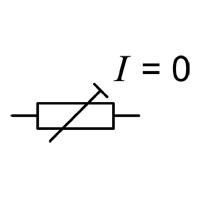 | Name: Resistor with pre-set adjustability. Adjustment permitted only when the current is zero Source: ISO 14617-2 |
 | Name: Carbon-pile resistor Source: IEC 60617-2019 |
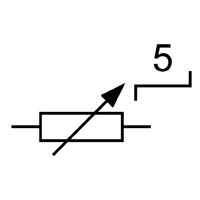 | Name: Resistor with adjustability in five steps Source: ISO 14617-2 |
Symbols of Special Resistors
| Symbol | Description |
|---|---|
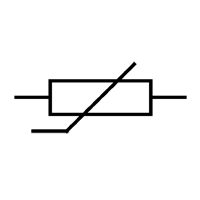 | Name: Resistor with non-linear inherent variability Source: ISO 14617-2 |
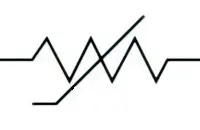 | Name: Nonlinear resistor (intrinsic) Source: IEEE Std 315-1993 |
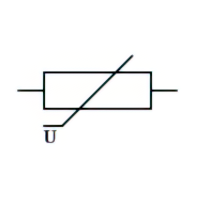 | Name: Resistor, voltage dependent Alternative name: Varistor Source: IEC 60617-2019 |
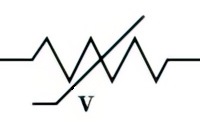 | Name: Symmetrical varistor (intrinsic) Alternative name: voltage-sensitive resistor (silicon carbide, etc) Source: IEEE Std 315-1993 |
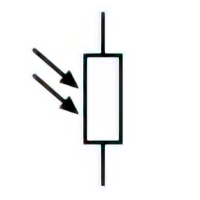 | Name: Light dependent resistor (LDR); Photo resistor Source: IEC 60617-2019 |
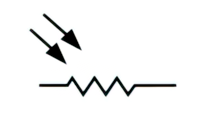 | Name: Symmetrical photoconductive transducer (resistive) Source: IEEE Std 315-1993 |
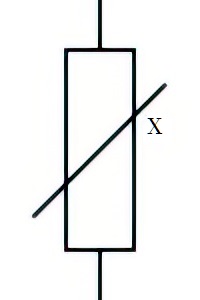 | Name: Magnetoresistor Remark: A linear type is shown. Source: IEC 60617-2019, ANSI/IEEE Std 315A-1986 |
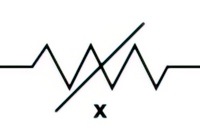 | Name: Magnetoresistor (intrinsic) (linear type shown) Source: IEEE Std 315-1993, ANSI/IEEE Std 315A-1986 |
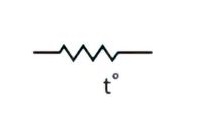 | Name: Thermistor, general symbol; thermal resistor Alternative name: Temperature-sensing element Source: IEEE Std 315-1993 |
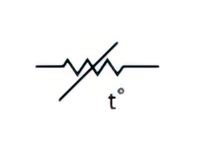 | Name: Linear thermistor Source: IEEE Std 315-1993 |
 | Name: Nonlinear thermistor Source: IEEE Std 315-1993 |
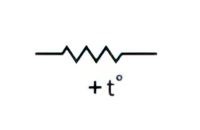 | Name: Thermistor with positive temperature coefficient (PTC) Source: IEEE Std 315-1993 |
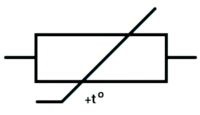 | Name: PTC thermistor Source: IEC 60617-2019 |
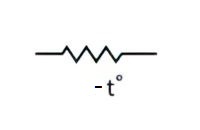 | Name: Thermistor with negative temperature coefficient (NTC) Source: IEEE Std 315-1993 |
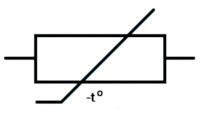 | Name: NTC thermistor Source: IEC 60617-2019 |
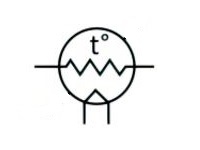 | Name: Thermistor with independent integral heater Source: IEEE Std 315-1993 |
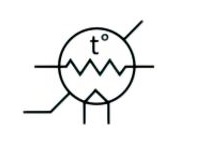 | Name: Nonlinear thermistor with independent integral heater Source: IEEE Std 315-1993 |
Notes
A1:
To identify the two-terminal device characterized essentially by its resistance. On direct acting indicating analogue electrical measuring instruments and its accessories, to identify the accessory to be connected in series with the voltage circuit of a measuring instrument in order to extend its measuring range.
In the application of this symbol, the letter symbol either R, L, or Z is placed within or adjacent of the rectangle to identify the type of accessories, series resistor, series inductor or series impedance, respectively.
A2:
To identify the accessary to be connected in parallel with the current circuit of a measuring instrument in order to extend its measuring range.
